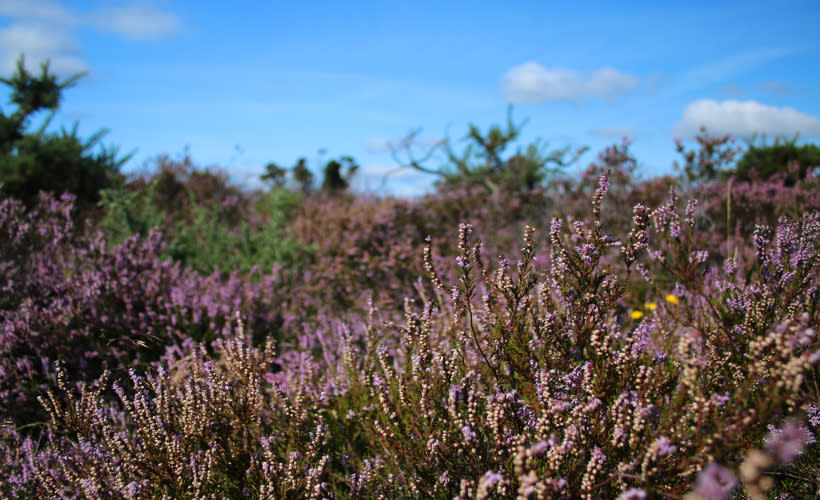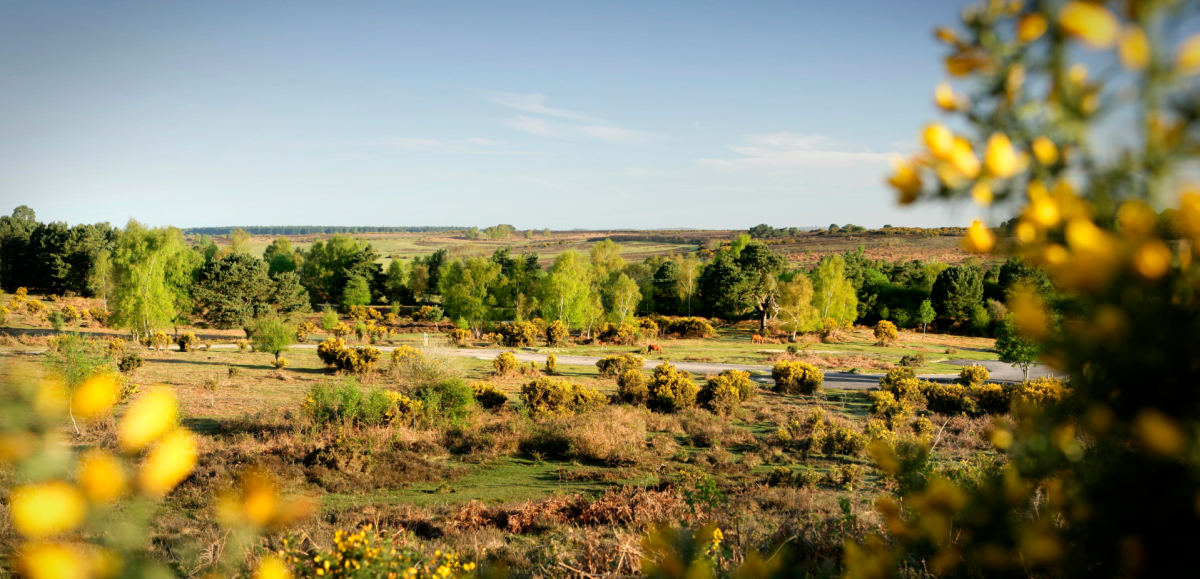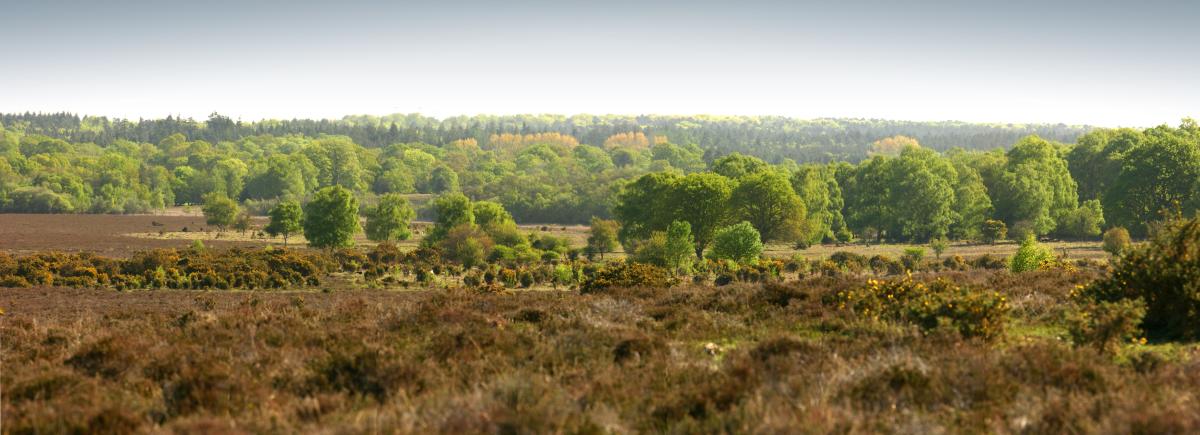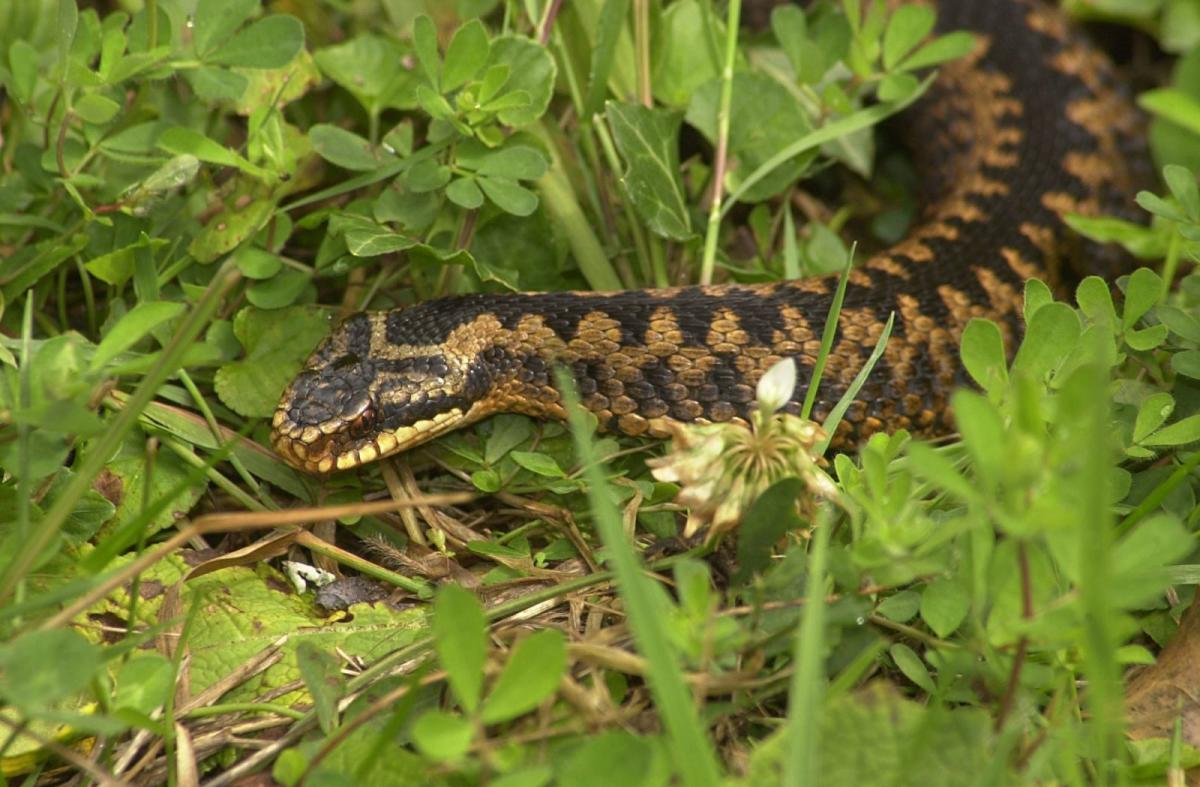Here in the magical New Forest, discovering the spring and summer colours is one of our favourite things to do. It’s mindful, it’s fun and, once you start noticing the beauty all around, it’s very hard to stop!
From the vast, cloudless skies over our heathland, to the sparkling seas off our 40-mile ‘secret’ coast, you’re never far away from the colour blue in the New Forest.
 Take in the sapphire waters of the Solent from Milford on Sea beach or Calshot Spit, or trek across Clayhill Bottom at Holmsley, while you marvel at the azure sky.
Take in the sapphire waters of the Solent from Milford on Sea beach or Calshot Spit, or trek across Clayhill Bottom at Holmsley, while you marvel at the azure sky.
Yet more of this calming colour is on show on the floor of our Ancient Woodlands, where vast carpets of acid green and ultramarine bluebells tremble in the breeze.
Look carefully, and you’ll see them dotting the hedgerows and in the older copses. But, to experience their full power, visit Broomy Inclosure near Exbury, Roydon Woods and Sandleheath near Fordingbridge, and Pondhead Inclosure, near Lyndhurst.
 For yet more blue, keep an eye on our feathered friends. From the fluffy baby Blue tits, to the turquoise flash of a Kingfisher’s wing (you’ll have to sit patiently near a low-hanging river branch by one of our rivers to catch this) this colour is everywhere.
For yet more blue, keep an eye on our feathered friends. From the fluffy baby Blue tits, to the turquoise flash of a Kingfisher’s wing (you’ll have to sit patiently near a low-hanging river branch by one of our rivers to catch this) this colour is everywhere.
Passionate about purple? Keep a sharp eye on the sunny side of the natural hedgerows for a few late violets, nesting amongst the grass. You’ll also find this colour – as well as pink and a soft grey- green in some of the sunsets at this time of year, as well as at sunrise.
Get along to the peace of Lepe Beach to experience these colours, or to Bolton’s Bench near Lyndhurst and Piper’s Wait hill near Nomansland. At 423 feet above sea level, it’s the forest’s highest point.
Later in the season, the heather will paint the moorland purple and pink. Don’t forget to keep an eye out for the Early purple orchids, too, whose mauve flowers are a huge favourite with the bees!

Yearning for yellow? Look no further than the gorse – the prickly bush that dots our heathland in its thousands. It has flowers the colour of egg-yolk which give out a warm, coconut scent.
For more mellow yellows, keep your eye out beside the New Forest’s ponds and waterways as you’ll be able to spot wild iris – also known as Yellow Flags – as well as marsh marigolds, or kingcups, and their smaller cousin, the buttercup. These popular flowers will start to carpet meadow areas from May onwards.
Look out for our wildlife, where yellow crops up on everything from yellowhammer and wagtail birds, on the stripey bumblebees, and on brimstone butterflies.
 Thinking pink? Look to our feathered friends again – jays, a relative of the magpie, are a grey-blush pink, with bars on their wings of Kingfisher blue. Bullfinches, which are a deep, rosy hue, can be seen in the late spring and seem to favour fruit trees, many of which have delicate, shell-pink blossom.
Thinking pink? Look to our feathered friends again – jays, a relative of the magpie, are a grey-blush pink, with bars on their wings of Kingfisher blue. Bullfinches, which are a deep, rosy hue, can be seen in the late spring and seem to favour fruit trees, many of which have delicate, shell-pink blossom.
Pink pops up in our hedgerows, too, where the red bladder campion blooms, alongside the palest pink of the dog rose, which can be seen extensively in early summer.
Keep looking, as you’ll also spot the cerise of the wild honeysuckle (which also smells divine) weaving through the hedgerows, and the marsh and spotted orchids which can be seen in damp corners of meadows or at the edges of woodland.
 There are, however, no prizes for guessing that the most common colour you’ll see in the New Forest is green!
There are, however, no prizes for guessing that the most common colour you’ll see in the New Forest is green!
Said to promote feelings of wellbeing, soothe stress and enhance creative thinking, one of the best greens you’ll see are the emerging beech leaves in the Ancient Woodland. Catch them at the right moment and they look as if they are suspended in the spring air.
 Marvel at the apple-green hart’s tongue ferns – you’ll find these on damp walls and under sheltered hedges – as well as the prehistoric-looking bracken, which is busy unfurling in the woodland glens.
Marvel at the apple-green hart’s tongue ferns – you’ll find these on damp walls and under sheltered hedges – as well as the prehistoric-looking bracken, which is busy unfurling in the woodland glens.
Some of the most beautiful greens you’ll ever see can be found on the rare reptiles which call the New Forest their home.
Wait patiently and quietly near a patch of sunny stones on the heath and you may catch the iridescent emerald flash of a male sand lizard, or the yellowish green and brown zig-zag of an adder. NEVER approach these protected creatures or try and touch them, just watch from a careful distance – adders are venomous and although a bite is rare, medical attention should be immediately sought.
 Finally, for a colour explosion you’ll never forget, including everything from flaming orange, to salmon pink, magenta, crimson and mauve, head over to Exbury Gardens. Their 200-acres of rhododendrons, azaleas and flowering trees and shrubs are world-famous and they’re in bloom right now!
Finally, for a colour explosion you’ll never forget, including everything from flaming orange, to salmon pink, magenta, crimson and mauve, head over to Exbury Gardens. Their 200-acres of rhododendrons, azaleas and flowering trees and shrubs are world-famous and they’re in bloom right now!
 Image - Exbury Gardens & Steam Railway
Image - Exbury Gardens & Steam Railway

